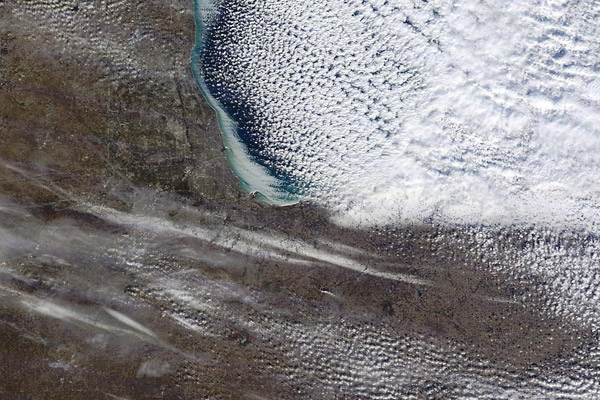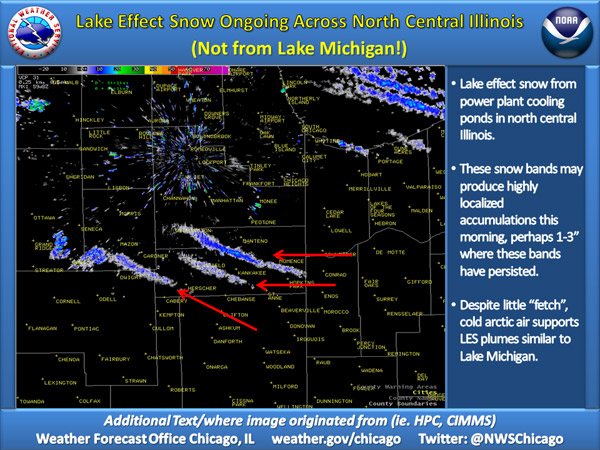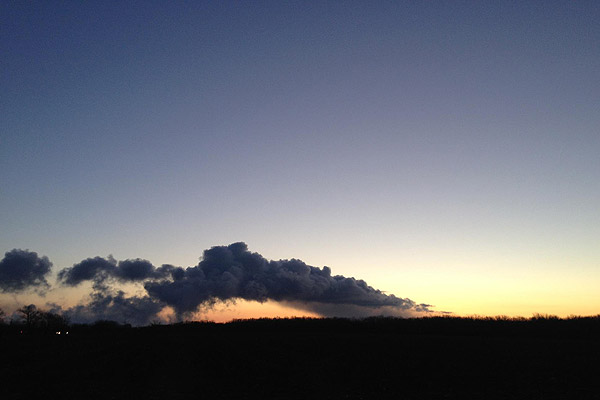You might have noticed, via Tom Skilling or Chicagoist, a spectacular NASA photo of what lake-effect snow looks like on a regional scale. It's seriously amazing. Here's a close-up of Illinois and northwest Indiana on January 22:

Note the little streaks of clouds to the southwest, however. As Indiana was getting hit hard with snow, and Chicago was mostly missing it, very specific places in north-central Illinois were scheduled to get more than us. The local NWS released an interesting warning to this effect (emphasis mine):
RADAR CONTINUES TO DEPICT TWO VERY SMALL AND NARROW BANDS OF LIGHT SNOW DEVELOPING AND MOVING SOUTHEAST ACROSS THE WILL AND KANKAKEE COUNTY BORDER AREAS…AS WELL AS ANOTHER AREA NEAR THE GRUNDY AND LIVINGSTON COUNTY BORDER. THESE BANDS OF LIGHT SNOW APPEAR TO BE LAKE EFFECT FROM COOLING PONDS IN THESE AREAS….
Whoa.
VISIBILITY WILL LIKELY BE REDUCED TO 1 TO 3 MILES IN LIGHT SNOW IN THESE AREAS…WITH HIGHLY LOCALIZED ACCUMULATIONS OF AN INCH TO PERHAPS AS MUCH AS THREE INCHES POSSIBLE BEFORE SNOW ENDS THIS MORNING. TRAVELERS IN THESE LOCATIONS SHOULD USE CAUTION AS CONDITIONS WILL VARY GREATLY OVER VERY SHORT DISTANCES.
And via TYWKIWDBI and @moneywithwings, the Chicago office of the NWS released a map:

The cooling ponds in question are Braidwood Lake, Dresden Cooling Lake, and the LaSalle County Nuclear Cooling Pond. They're very small, and small-lake lake-effect snow isn't something meterologists have studied a lot; it's possible on long but narrow lakes like New York's Finger Lakes, Lake Kentucky, and so forth, but nuclear cooling ponds are really, really small (hence "little 'fetch'"), which is why Accuweather's Jesse Farrell is skeptical.
Here's what the Dresden cloud plume looked like, via the Chicago NWS's wonderful Facebook page.

The NWS in Pittsburgh found similar long, narrow bands in the vicinity of nuclear plants, but these were attributed to the steam coming from the plants themselves.
They could both be right; or we could have a little meteorological mystery here.
Photographs: NASA, NWS



